The State of War: How the Kremlin Is Rebuilding Russia to Confront the West
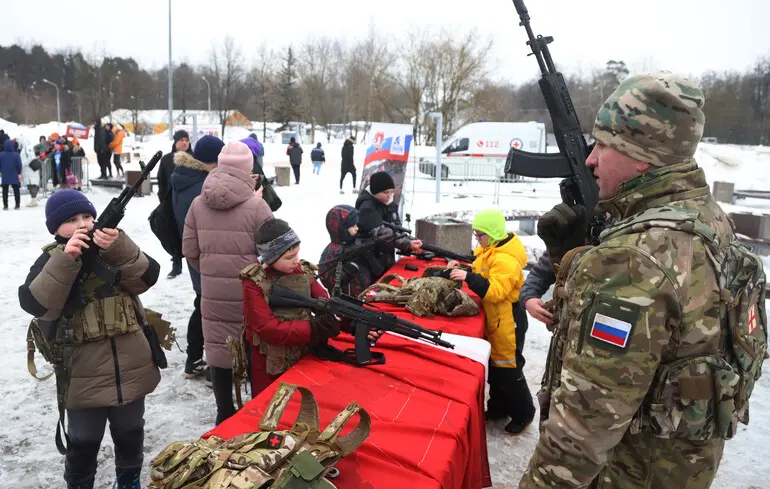
There is no indication that Russian President Vladimir Putin intends to end the war against Ukraine. By stalling negotiations with the United States, he continues to pursue the same objectives: to dismantle Ukrainian statehood and erase its national identity. If that proves impossible, he aims at minimum to force Ukraine’s capitulation, secure international recognition of the occupied territories as part of Russia, demilitarize the country, formalize its neutral status, and install a pro-Russian regime in Kyiv. Putin is convinced that time is on his side—and that in the end, he will be crowned with the laurels of victory over Ukraine.
Putin’s confidence is fueled not only by Russia’s slow but steady advances on the battlefield and the opportunistic moves of the Trump administration, but also by the absence of any large-scale protests in Russia—either from the public or the elite — during the last three years. Even mounting economic problems don’t appear to worry him. While the economy is overheating and inflation has climbed to 10.1%, Russia’s pre-war financial reserves are still allowing the system to function, at least for now.
The Kremlin appears to have settled on its domestic policy for years to come. Even if the hot phase of the war ends and some form of peace is established, that won’t mean a reduction in defense spending, a rollback of societal militarization, an end to repression, or a softening of anti-Western rhetoric. Everything will continue as it does now. There will be no thaw, no return to “normal.” And why should there be, if both the ruling elite and the Russian public seem largely content with the current state of affairs?
According to the Russian Federal State Statistics Service (known as Rosstat), the number of Russians satisfied with their wages has grown sharply over the past two years—from 50.6% in 2022 to 61.3% in 2024. Over the same period, the average nominal monthly wage rose by 18.3%, reaching 87,952 rubles (around $1020 at current exchange rates). This growth is largely due to a labor shortage, which has forced employers to raise pay to retain existing staff and attract new hires. Meanwhile, official unemployment has continued to decline—from 4.3% in 2021 to only 2.3% by the end of 2024.
As The Financial Times notes, Russia’s war economy is reviving the country’s “rust belt” by pouring massive amounts of money into historically impoverished regions. State orders to supply the army with weapons and clothes have given well-paid jobs. Soldiers who sign contracts with the Russian army get high bonuses in the millions of rubles, and their families receive payouts if they die. The war has become a key driver of Russia’s economic growth: in 2024, at least 40% of GDP was directly driven by war-related production.
In fact, peace itself poses a threat to the Russian economy. As The Wall Street Journal reports, a potential settlement of the war could lead to a sharp reduction in military spending, leaving a significant hole in the federal budget—one that would be difficult to fill. This is one reason why any major cutback in military production is unlikely. In addition, the Kremlin would likely use any peace settlement as a chance to rebuild and modernize its military capabilities.
So far, there are no visible signs of a threat to Putin’s power from within the Russian establishment. The country’s elites remain consolidated around the president, viewing him as the guarantor not only of their wealth, but of their personal safety. At the same time, infighting continues among the so-called “Kremlin towers” [a Russian term referring to rival factions within the presidential administration]—most notably over the central bank’s current interest rate (the current rate stands at 21%). Still, when it comes to the so-called special military operation, there is no disagreement: Ukraine must be crushed, Europe humiliated, and the world divided between Russia, the United States, and China.
While supporting the war against Ukraine and the broader confrontation with the West, various power groups within Putin’s inner circle continue to compete for access to state resources. This infighting poses no threat to the regime—it is, in fact, welcomed by the Kremlin, as it helps keep the elite under control and prevents the rise of another Prigozhin [Yevgeny Prigozhin, the head of the Wagner mercenary group, launched an all-out rebellion against the Kremlin in 2023 and was killed in a plane crash shortly thereafter].
The recent arrests of generals in Russia’s Ministry of Defense are widely seen as a consequence of these internal battles over influence and financial flows. At the same time, such repressive measures rarely affect members of the highest echelon of power.
There appear to be no “doves” left in Putin’s inner circle—only “hawks,” who vary only in the intensity of their belligerence. The differences between them are not ideological, but tactical. First Deputy Chief of Staff Sergei Kiriyenko, billionaire Yuri Kovalchuk, and Rostec [a Russian state-owned defense conglomerate] CEO Sergei Chemezov advocate for fighting until Russia achieves full victory, though they are open to a temporary pause of three to six years to regroup, rearm, and eventually seize all of Ukraine. In contrast, Deputy Chief of Staff Dmitry Kozak supports the use of hybrid rather than military means to reach the same strategic objectives. Still, when Kiriyenko, Kovalchuk, and Chemezov push for more aggressive foreign policy moves, the rest of the elite rarely object.
The reason for such unanimity among Russia’s political and business elites seems clear: after three years of war, they have adapted to the new reality—and are profiting from it. According to Forbes’ annual rankings, despite sanctions and ongoing hostilities, 146 Russians made the World’s Billionaires in 2025, including 15 new names. Why protest, after all, if the Kremlin still has a real chance to end the war on its own terms—and throw the world into chaos in the process?
Anti-Westernism remains a core pillar of Kremlin policy. However, amid a relative thaw in relations with the United States, new “main enemies” have been designated: the United Kingdom and France, both of which are pushing for the deployment of European deterrence forces in Ukraine. Even if a ceasefire is reached, anti-Western and anti-European rhetoric will not disappear. At the same time, the authorities continue to impose patriarchal norms across Russian society.
The latest trend is the fight against abortion and voluntary childlessness. Amid record-low birth rates, the authorities have gone beyond merely banning so-called “childfree propaganda.” A new wave of regional incentives now offers cash payments to pregnant schoolgirls—because Putin needs new soldiers for future wars. Depending on the region, girls enrolled in schools, colleges, or universities can receive between 100,000 and 150,000 rubles (around $1,160 to $1,745 at current exchange rates) upon reaching the 22nd week of pregnancy.
While Russian television may now feature fewer overtly patriotic talk shows and more entertainment content, the state’s push to militarize society continues—and it is children who remain the primary focus. Central to this effort is the “Movement of the First,” a Kremlin-backed youth organization dedicated to military-patriotic education and to instilling “traditional Russian spiritual and moral values” in children. Among its participants is 12-year-old Maria Yankovskaya, the performer behind the viral song “Sigma Boy.” The movement emphasizes mass participation and relies on veterans of the “special military operation” to shape the next generation.
The Kremlin has also quietly begun replacing mid- and lower-level officials with individuals who fought in Ukraine or held administrative roles in the occupied territories. In late March, Yevgeny Solntsev, former head of the self-proclaimed separatist “Donetsk People’s Republic” (DPR) government, was appointed acting governor of the Orenburg region. Irina Gekht, who previously oversaw the Russian-occupied part of the Zaporizhzhia region, was sent to lead the Nenets Autonomous Okrug.
To cultivate loyal civil servants and build what it calls a “new elite” from among participants in the invasion of Ukraine, the presidential administration launched a special training program known as Time of Heroes. In November 2024, Yevgeny Pervyshov—a veteran of the “special military operation” and a participant in the program—was appointed acting governor of Russia’s Tambov region.
Alongside the militarization of society, the machinery of repression is also accelerating. On the one hand, the Kremlin uses repression as a means of maintaining control over the population. It is no coincidence that Russia is adopting elements of China’s model of “digital” authoritarianism, seeking to expand its grip over cyberspace.
On the other hand, in this way, the "new nobility" of the Federal Security Service (FSB) works to strengthen its power. As Andrei Soldatov, editor-in-chief of Agentura.ru, observes: “Repression is often educational in nature. There’s a sector that needs to be put under strict control—to remind people who’s boss.”
The state’s repressive measures go far beyond simply declaring new “foreign agents” [a designation that carries significant legal and social penalties]. Russian courts are now handing down real prison sentences for social media comments and public statements deemed to be “fake news” about the army, “discrediting” the military, or “justifying terrorism.” People have also been jailed for sending money to Ukraine—or for alleged “high treason.” Even in the event of a ceasefire, one should not expect any loosening of these laws. If anything, the first victims of the next wave of repression may not be anti-war activists, but rogue war correspondents and hardline pro-war “Z-patriots” who have slipped out of the Kremlin’s control.
Putin’s Russia has fully transformed into a state of war—one built for confrontation with the West and the suppression of all dissent. The Kremlin has succeeded in making war routine, militarizing the economy, society, and state institutions. Even a potential ceasefire would not change the nature of the regime. At best, it would serve as a temporary pause before a renewed escalation. But this model cannot endure forever—and its consequences for Russia itself are likely to be catastrophic.
Please select it with the mouse and press Ctrl+Enter or Submit a bug










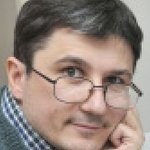

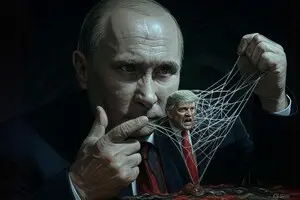

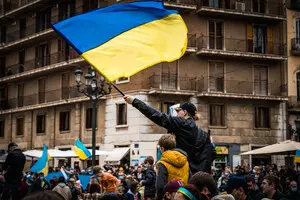
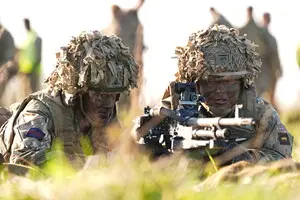
 Login with Google
Login with Google